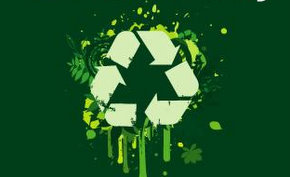
During April, I attended the TC 130 working group meeting for the ISO standard currently under development to determine the carbon footprint of print media. The working group is made up of about 30 people from around the world, all of whom have a significant interest in printing. Representatives came from nations including China, Japan, France, the US, Canada, the UK, Germany, Scandinavian countries and, of course, Australia. The issues facing print are consistent all around the world – environmental concerns, social pressure, rapidly changing technologies and pressure from other media. Developing a set of guidelines for determining the carbon footprint of the print process is an important but complex task.
The attempts to rationalise the industry resulted in mapping a workable solution to a number of concerns being raised. Firstly, there seems to be no agreed method to determine the way carbon is measured in paper, obviously a major input to the print process. This point is a problem for those printing firms that seek to grade paper by type and, therefore, the carbon value of a particular paper. While there are some good programs in place and some under development, there is currently none that are agreed to be a “standard”.
Separate standard
Therefore, the working group concluded that a good solution to this situation is to develop a separate standard for carbon in paper. The key issue in papermaking paper is the consideration that we struggled with – at what stage does the tree ‘start’? Should we measure the carbon in trees at the point of harvesting or should it be from the point that the tree has been planted?
The trend over the past decade of introducing bio-fuel completely changes the energy mix of the industry. These are important questions that can massively change the value of carbon in any calculation in manufacturing paper products. Perhaps, as the working group concluded, the industry needs a standard that can determine the best way to determine carbon in paper products, from the tree right through to the door of the printing firm.
The second area we looked at was how the actual printer would form its own standard. In other words, a standard that measures only the parts of the process that the printing firm is in control of, such as production, sales, administration, energy and staff.
The third standard would cover the contentious issue of end of life of a paper product. This is a complex and emotive area. The working group decided that we should consider “end of use” as the point that bookends the carbon footprint of print media. The end-of-life consideration in regards to recycling, reuse or landfill deserves its own ISO standard. There is a special situation in Europe where a significant amount of used paper is burnt to generate energy. Paper is a wood product that exists in the terrestrial carbon cycle and, therefore, it can be considered carbon neutral when burned to produce electricity. It highlights a battle for collected waste paper in Europe.
The result is that a carbon footprint calculation for printing is not a simple measurement of steps. It is a complicated issue that might be best broken into a number of manageable stages.
Phillip Lawrence is a consultant and speaker who specialises in print and the environment. He consults for paper firms, including Asia Pulp & Paper
Comment below to have your say on this story.
If you have a news story or tip-off, get in touch at editorial@sprinter.com.au.
Sign up to the Sprinter newsletter

